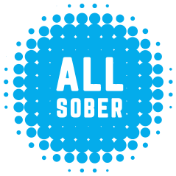Your Guide to Harm Reduction, With John Oliver
The "Last Week Tonight" host dedicated a segment to the latest tools and programs that aim to keep people who use drugs safe. Plus: how you can help
On a local news report, a doctor describes three patients admitted to his needle-exchange clinic in a single day. All three said they were taking the opioid oxycodone; none had any trace of it in their urine samples. Instead, they had unknowingly taken the stronger, potentially deadly fentanyl, which is frequently disguised as, or mixed into the supply of, other substances.
Cut to “Last Week Tonight” host John Oliver: “The only time you should be surprised by what is in your urine is when you forgot you ate asparagus earlier that day, or — worst-case scenario — the shrunk-down Magic School Bus comes out after a biology lesson gone horribly wrong.”
Oliver brought his signature mix of serious issues and occasional irreverent asides to the topic of harm reduction on his HBO show earlier this year, in a comprehensive and compassionate segment. The host laid out the latest effective techniques in helping people who use drugs stay safe and, hopefully, find a way to treatment.
Oliver also directed plenty of ire and exasperation toward the challenges, both legal and societal, that hamper the adoption of harm reduction tools and services like drug-checking equipment, naloxone and overdose prevention centers. “The problem with all harm reduction programs is that people are so angry with those who use drugs, they want to try to punish them into abstinence. But that’s not how any of this works!”
He ended with a plea: “We all need to get on board here. Our ingrained stigmas around drugs and the people who use them run really deep.”
Tell Me More About Harm Reduction. How Can I Help?
The Centers for Disease Control (CDC) reported a record-breaking number of overdose deaths between May 2020 and April 2021 — more than 100,000 deaths.
The culprit of most overdose deaths, around two-thirds, is substances laced with fentanyl or other synthetic opioids, largely the result of an increasingly contaminated drug supply.
Outdated ’80s-era policies and messaging like “Just Say No” and zero-tolerance laws aren’t cutting it — if anything, they do more harm than good. The harm reduction movement proposes radical changes in attitudes and tactics, to protect people who use drugs, reduce unnecessary deaths, and ultimately promote treatment and recovery. It accepts that people will use illegal drugs and focuses on ways to keep them safe.
Harm reduction has many aspects. Some require professional oversight: Needle-exchange programs provide clean, unused syringes to those who inject drugs, and dispose of used ones. Overdose prevention centers offer discreet sites with sterile equipment where people may use under the supervision of trained professionals.
But there are other harm reduction practices that anyone can participate in, which can be equally vital in keeping people alive and safe.
Drug-checking is the process of testing an illicit substance someone is about to use to make sure they know what is in it. If someone unknowingly purchases fentanyl-laced cocaine, for example, and checks it prior to use, it could save their life. You can purchase drug-checking equipment like fentanyl-testing strips and drug reagent kits through services like the Bunk Police or Dance Safe. But note: In many states, it is illegal to possess these tools, a policy Oliver rightly called “ridiculous.”
Another harm reduction approach is to carry naloxone on you (the nasal-spray version is sold under the brand name Narcan). Naloxone quickly reverses the effects of opioids on the brain and restores breathing function in someone who has overdosed. Even if you do not use, you should think about carrying this life-saving medication — “we all need to get on board” — as overdoses happen quickly and unexpectedly. Fast access to naloxone can save someone’s life.
While there has been a recent national shortage of naloxone, there are many nonprofit organizations that can provide it to people free of charge. Two to check out for more information on how to get, store and use naloxone are Next Distro and Harm Reduction Circle.
As Oliver concluded, “We need to meet people where they are, help them transition into safe drug use to stay alive, and remove barriers for those seeking addiction treatment.”
More Help & Information
Sobriety vs. Recovery: What's the Difference?
Are the concepts themselves up for debate? Do they require certain treatments, or abstinence from everything? It's complicated! And new ways of thinking are changing the conversation.
Now Elite NFL Players, They First Tackled Addiction | News Roundup
All Sober compiles the best of the latest headlines. Here's your addiction and recovery news for the week of Feb. 19, 2024!
Help Them Help You: Explaining Your Mental Health to Your Family
Your mental health can affect — and be affected by — your loved ones. Here's how to discuss it with them so everyone can heal.
Dry January (and Beyond): The Possibilities Are Endless
There's never been a better time to go sober. Whether you're trying it out this month or already living the life, join us for some tips, ideas, inspiration — and maybe even new friends.
Sober Holiday Tips: Meeting 'Share-a-Thons'
Need to get out of the house for a bit and see some friendly sober faces? Recovery support group meeting marathons run 24/7 from Christmas Eve through New Year's Day.
What Happens After an Intervention?
Your loved one agreed to get treatment for addiction during their intervention — or not. Here's what you need to know about what comes next.
We're in This Together: Building a Healthy Sober Support Network
You are the captain of your recovery, but you don't have to do it alone. A sober support network will lift you up in tough times and celebrate your triumphs.
Real-Life Recovery Tips: Phone a Friend
When you're traveling, you can take your sober support network with you — right in your pocket. Rocker Kasim Sulton shares his top recovery tip in this video.











